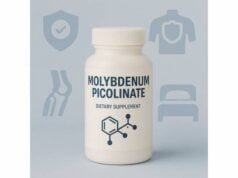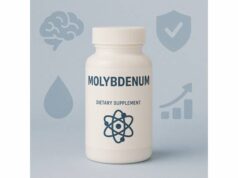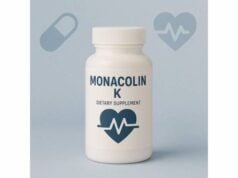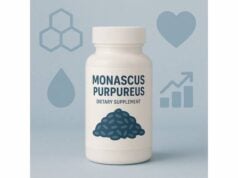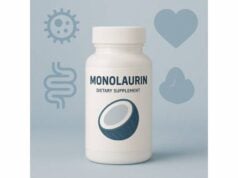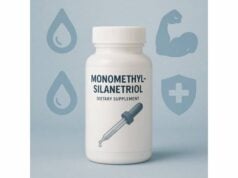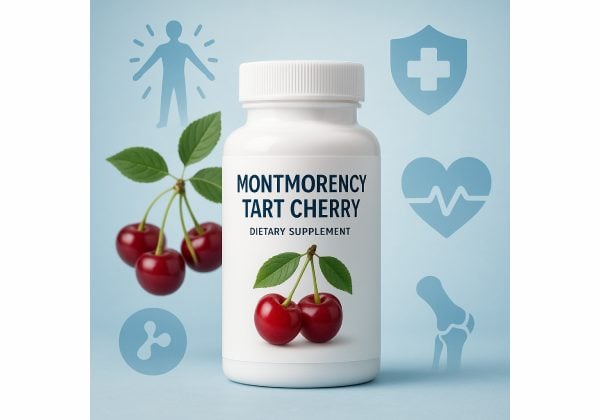
Montmorency tart cherries have earned a reputation that spans the kitchen and the clinic. Their deep ruby color signals a rich mix of anthocyanins, flavonols, and other polyphenols, while the fruit’s naturally occurring melatonin gives them a special place in the “food-as-sleep-support” conversation. Beyond sleep, people look to Montmorency tart cherry for help with post-exercise recovery, joint comfort, and everyday cardiovascular wellness. As a food, it is approachable and versatile—available as 100% juice, shelf-stable concentrate, powder, and capsules—so it fits different preferences and sugar goals. As a supplement, it is most convincing when used consistently and in amounts studied in clinical trials. This guide translates the best current evidence into practical steps: what it is, where it can help, how to use it, how much to take, and who should be cautious. You will also find clear ranges for dosing and honest context about what the science does—and does not—show, so you can make informed choices for sleep, recovery, and overall well-being.
Key Insights
- May improve sleep quality and duration in some adults when taken daily, especially as juice or concentrate.
- Helps reduce next-day muscle soreness and strength loss after hard training when started several days before exercise.
- Typical adult dosing: 60 mL/day concentrate (30 mL twice daily) or 240–480 mL/day 100% juice; capsules or powder often 500–1,000 mg/day.
- Safety: generally well tolerated; high-sugar juices can challenge glycemic control and may cause gastrointestinal upset in sensitive people.
- Avoid or seek medical advice if you have a known cherry or birch-pollen–related allergy, IBS triggered by sorbitol/FODMAPs, or if you need strict carbohydrate restriction—choose low-sugar forms instead.
Table of Contents
- What is Montmorency tart cherry?
- Proven benefits: what you can expect
- How to use juice, concentrate, and capsules
- How much Montmorency tart cherry per day?
- Side effects, safety, and who should avoid
- What the evidence says today
What is Montmorency tart cherry?
Montmorency is a cultivar of Prunus cerasus (tart or sour cherry). It is prized for high levels of anthocyanins (the pigments that provide the vivid red color) and other polyphenols that act as antioxidants and modulators of inflammatory signaling. Unlike sweet cherries, tart varieties also contain measurable melatonin, the hormone that helps regulate the sleep–wake cycle. While the melatonin content is modest, daily intake appears sufficient to influence downstream sleep markers in some studies.
Forms you will find
- 100% juice: Ready-to-drink, typically pasteurized. Delivers the full flavor profile with natural sugars.
- Concentrate: A thick syrup-like extract; commonly used at 30 mL twice daily diluted in water. This is the most frequently studied format.
- Powder or capsules: Freeze-dried fruit or standardized extract in 500–1,000 mg daily amounts. Useful for those limiting sugar or seeking convenience.
- Whole fruit or frozen: Nutritious and versatile in meals, though research tends to use liquid or extract forms for dosing accuracy.
Key bioactives and why they matter
- Anthocyanins (e.g., cyanidin-3-glucoside): associated with reduced exercise-induced muscle damage, support for endothelial function, and modulation of inflammatory cytokines.
- Flavonols and phenolic acids: contribute to the antioxidant capacity and may help temper oxidative stress after strenuous activity.
- Melatonin: small amounts from the fruit plus potential upregulation of melatonin pathways can influence sleep duration and sleep efficiency in certain contexts.
Taste and nutrition snapshot
Montmorency tart cherry products have a pronounced tart-sweet profile. Juice and concentrate provide vitamins and potassium but also natural sugars. Powders and capsules avoid added sugars and calories but vary in standardization—always check the label for anthocyanin or polyphenol content to compare products.
How it fits into daily life
Because Montmorency tart cherry is a food first, many people incorporate it into breakfast smoothies, evening mocktails, or post-workout shakes. The concentrate’s dosing simplicity (a measured tablespoon-sized serving) makes adherence easier than estimating servings of whole fruit.
Big picture
Think of Montmorency tart cherry as a daily nourishment strategy with specific performance edges: sleep support for some, recovery help for active bodies, and incremental benefits for cardiometabolic wellness. The most consistent results show up with consistent daily use, not occasional sips.
Proven benefits: what you can expect
1) Sleep quality and duration
Several controlled trials report improvements in total sleep time and sleep efficiency when Montmorency tart cherry is consumed daily, especially as concentrate or 100% juice. The effect size is modest and not universal, which is common for nutrition-based sleep aids. Benefits appear more likely when intake is twice daily, including an evening dose, and after several days of consistent use. Proposed mechanisms include fruit-derived melatonin, increased availability of tryptophan for serotonin/melatonin pathways, and anti-inflammatory actions that may indirectly support sleep continuity. Expect improvements measured in minutes, not hours, and think of tart cherry as a gentle nudge rather than a replacement for foundational sleep hygiene.
2) Exercise recovery and muscle soreness
The best evidence base is in exercise recovery. When taken for several days before and after a hard workout or event, tart cherry can reduce next-day muscle soreness, limit strength loss, and speed functional recovery. Runners, team-sport athletes, and resistance-trained individuals have all shown benefits in controlled settings. Realistically, you may notice less stiffness and faster rebound across 24–72 hours post-exercise. The effect is tied to anthocyanin-rich dosing and adherence to preloading (starting 4–7 days before high-intensity efforts). For recreational athletes, this may translate to more consistent training with fewer prolonged “dead-leg” days.
3) Joint comfort and uric acid
Tart cherry has a long folklore history in gout. Modern trials suggest that 100% tart cherry juice can lower serum uric acid in certain populations and modulate some inflammatory biomarkers. However, results are mixed across studies, and not all trials confirm a reduction in gout flares. If you live with gout, tart cherry may be a supportive adjunct to medically guided urate-lowering therapy, not a stand-alone fix. For people with non-gout joint aches, the anti-inflammatory profile can still be appealing, but responses vary.
4) Cardiometabolic markers
Early research points to potential improvements in select cardiovascular risk markers (for example, oxidized LDL or adhesion molecules) without consistent changes in blood pressure. Meta-analyses indicate a small but credible reduction in C-reactive protein with appropriate dosing and duration, while average effects on resting BP are neutral. Practically, tart cherry is best viewed as a complement to cornerstone lifestyle strategies—sleep, physical activity, fiber-rich eating—rather than as a primary driver of cardiometabolic change.
5) Everyday wellness
People often report a subjective sense of better recovery, less next-day heaviness, and more refreshing sleep when they land on a dose and timing that suit them. These outcomes are clearest when tart cherry is part of a structured routine, not an occasional drink.
What not to expect
Tart cherry does not act like a sedative, does not erase the need for good sleep habits, and does not replace medical care for gout or hypertension. Benefits are incremental and cumulative, depending on context, dose, and consistency.
How to use juice, concentrate, and capsules
Choose the format that fits your goals and lifestyle:
- Concentrate (most studied): Measure 30 mL, dilute in 200–250 mL water, and drink morning and evening. This delivers a reliable anthocyanin load with predictable taste and routine.
- 100% juice: Use 240 mL once or twice daily. Check the ingredient list for “100% juice” and no added sugar. If you need carbohydrate control, consider half-servings or switch to concentrate/powder.
- Powder/capsules: Look for products listing standardized anthocyanins or total polyphenols. A practical starting point is 500–1,000 mg/day, often split into two doses. Capsules are portable and avoid sugar; they are good for travel or late-night dosing.
Timing strategies
- For sleep: Take one dose 60–90 minutes before bed. A second daily dose earlier in the day may help maintain steady exposure. Pair with consistent lights-out times and a cool, dark bedroom.
- For recovery: Start 4–7 days before a key workout or event and continue 2–3 days after. This “loading and tailing” pattern matches how studies are designed and supports the inflammation and oxidative stress peak that follows strenuous activity.
- For joint comfort: Use daily, not only during flares. Consistency matters more than sporadic large intakes.
Mixing ideas you will actually use
- Evening spritzer: 30 mL concentrate + sparkling water + a squeeze of lemon over ice.
- Morning smoothie: 240 mL 100% tart cherry juice + frozen berries + Greek yogurt or silken tofu.
- Protein shake add-on: Stir 30 mL concentrate into a post-workout shake for a recovery-friendly flavor hit.
- Capsule routine: Keep a small pill case by your toothbrush—AM and PM—to make adherence automatic.
Label-reading tips
- Prefer single-ingredient juice or concentrate; avoid blends that dilute tart cherry with apple or grape.
- If you buy powder or capsules, look for Montmorency named on the label and standardized polyphenol or anthocyanin content.
- Check serving math: some “shots” are two servings in one bottle; match the research doses by volume, not just the bottle count.
Sugar and taste management
If you like juice but want less sugar, dilute 1:1 with water or sparkling water. Concentrates offer flexible dilution—you control sweetness and intensity. For very low-sugar needs, choose powder or capsules and get flavor enjoyment from herbal teas or unsweetened mixers at night.
Common pitfalls (and fixes)
- Inconsistent use: Set calendar reminders and tie dosing to existing routines (breakfast, bedtime).
- Too little duration: Give it 2–3 weeks of daily use for sleep or joint comfort before judging effectiveness.
- Relying on tart cherry alone: Pair with sleep hygiene for nighttime goals and with protein, hydration, and smart training for recovery.
How much Montmorency tart cherry per day?
Evidence-aligned adult ranges
- Concentrate: 60 mL/day total, split as 30 mL morning + 30 mL evening (diluted in water). This is the prototype research dose for sleep and recovery.
- 100% juice: 240–480 mL/day (one to two cups), often divided into two servings. If choosing the higher end, consider your carbohydrate budget.
- Powder or capsules: 500–1,000 mg/day total, commonly split into two doses. Choose products that disclose anthocyanin or polyphenol content.
When to adjust
- Body size and training load: Heavier athletes or those completing multi-hour sessions may favor the higher end of the range, especially during loading phases.
- Sugar restriction: If you track carbs closely, prioritize powders/capsules or stick to 30 mL concentrate twice daily diluted in plenty of water.
- Sensitivity: If you experience GI discomfort, start with half-doses for one week, then titrate up.
Dosing for specific goals
- Sleep: 30 mL concentrate twice daily or 240 mL juice in the evening plus a smaller morning portion. If using capsules, try 500 mg in the evening for two weeks, evaluate, then consider split dosing.
- Event prep/recovery: Start 4–7 days pre-event with standard daily dosing and continue 2–3 days after. On event day, keep your routine; avoid experimenting with brand-new amounts.
- Gout/uric acid support: Use daily rather than episodic dosing. Pair with your clinician’s plan for urate-lowering therapy and dietary strategies.
How long until you notice something?
- Sleep: Some individuals notice changes within several days; for many, 2–3 weeks of consistent intake gives a fair test.
- Recovery: Effects show up within 24–72 hours after hard efforts if you preloaded.
- Cardiometabolic markers: Expect subtle shifts over 8–12 weeks; keep expectations realistic and focus on whole-lifestyle improvements.
Ceilings and common-sense limits
More is not always better. Very large intakes add excess sugar (with juice) or may cause GI discomfort (especially if you are sorbitol/FODMAP-sensitive). Staying within the ranges above keeps you in line with study-tested exposures and reduces the likelihood of side effects.
Practical calculators
- Concentrate bottle math: A 473 mL bottle provides ~15–16 days at 30 mL twice daily.
- Juice cartons: A 1-liter carton at 240 mL/day lasts a little over 4 days; plan purchases accordingly or rotate with powder/capsules for budget and sugar control.
Side effects, safety, and who should avoid
Overall safety profile
Montmorency tart cherry is generally well tolerated when used in amounts common to food or studied in clinical trials. Most people can include it daily without notable side effects.
Possible side effects (usually mild and dose-related)
- Gastrointestinal upset (bloating, cramping, loose stools), especially with high volumes of juice or in people sensitive to sorbitol and FODMAPs.
- Sleepiness is uncommon but possible if you take an evening dose and are particularly responsive to melatonin-containing foods.
- Tooth enamel concerns if you sip acidic juice throughout the evening—use a straw, dilute concentrate, and avoid brushing immediately after acidic drinks.
Sugar and calories
- 100% tart cherry juice and concentrate deliver natural sugars. If you have prediabetes, diabetes, or a low-carbohydrate goal, choose powders/capsules or dilute concentrate to manage total sugars while keeping dose fidelity.
Allergy and cross-reactivity
- Avoid tart cherry if you have a known cherry allergy. Some individuals with birch pollen allergy may react to stone fruits; consult an allergist if you are unsure.
Medication considerations
- There are no widely documented medication interactions at food-like intakes. If you take uric acid–lowering medications for gout, treat tart cherry as a potentially supportive adjunct, and monitor labs with your clinician. If you are on a strict carbohydrate-restricted diet for medical reasons, discuss low-sugar formats with your care team.
Special populations
- Pregnant or breastfeeding: Food-level intake (e.g., modest servings of juice or whole fruit) is typically acceptable, but discuss supplement-level dosing with your clinician.
- Infants and young children: Prioritize whole-food patterns; avoid concentrated or supplemental doses without pediatric guidance.
- IBS/FODMAP sensitivity: Start with capsules or powders and titrate slowly; consider a smaller evening dose to reduce GI load.
Quality and authenticity
- Choose products that clearly state Montmorency and list 100% tart cherry (for juices/concentrates). For powders/capsules, prefer brands that disclose standardized anthocyanins or polyphenols, use third-party testing, and provide lot numbers for traceability.
When to stop and seek care
- If you develop hives, swelling, difficulty breathing, or severe GI symptoms, stop immediately and seek medical attention. For chronic conditions (gout, insomnia, hypertension), do not discontinue prescribed therapies without clinician input.
What the evidence says today
Sleep
Human trials show that Montmorency tart cherry can increase total sleep time and sleep efficiency in some adults, particularly when taken twice daily for at least a week. Urinary melatonin metabolites often rise, supporting a plausible mechanism. Not every study shows benefits, and newer work in individuals with overweight/obesity has reported null results at certain capsule doses; this highlights how population, formulation, and dose influence outcomes. The best take-home: if sleep is your goal, use a concentrate or 100% juice regimen aligned with research and commit to a 2–3 week trial alongside strong sleep hygiene.
Exercise recovery
Systematic reviews and meta-analyses conclude that tart cherry reduces post-exercise soreness and helps restore strength and power after strenuous activity. Benefits are most consistent when participants preload for several days before the stressor and continue intake afterward. This pattern suggests an effect on inflammation and oxidative stress kinetics during the recovery window. Recreational and competitive athletes can apply the same loading strategy around races, tournaments, or heavy training blocks.
Gout and uric acid
Randomized trials in adults with metabolic risk markers show reductions in serum uric acid with 100% tart cherry juice, whereas other controlled studies find no dose effect on urate or flare frequency over shorter periods. Observational data link cherry intake to fewer gout attacks, but these studies cannot prove causation. The reasonable stance: tart cherry may support urate management for some, but it is not a replacement for guideline-based pharmacotherapy.
Cardiometabolic markers
Across controlled trials, tart cherry’s average effect on resting blood pressure is small or neutral, though select vascular and lipid markers (e.g., oxidized LDL, adhesion molecules) have improved in specific groups. A recent dose-focused meta-analysis indicates a small but credible reduction in C-reactive protein, hinting at anti-inflammatory potential with appropriate dosing and duration. In day-to-day life, this supports tart cherry as a complementary food strategy rather than a singular solution.
Quality of evidence and consistency
- Strongest signals: Exercise recovery outcomes and sleep metrics in some populations and protocols.
- Mixed or modest: Uric acid and cardiometabolic endpoints; often dependent on dose, form, and study duration.
- Gaps: Long-term, head-to-head trials comparing juice vs. concentrate vs. capsules, standardized by anthocyanin dose, are limited. Future research aligning biomarkers, objective sleep measures, and clinical endpoints will strengthen guidance.
How to interpret this for yourself
- Pick the goal (sleep, recovery, joint comfort). 2) Choose the form and dose that reflect research (see dosing section). 3) Commit to a consistent trial period (two to three weeks for sleep; loading around events for recovery). 4) Track simple outcomes (sleep diary, soreness ratings, training logs, uric acid labs if relevant). Use your own data to decide if continuing makes sense.
References
- Tart Cherry Supplementation and Recovery From Strenuous Exercise: A Systematic Review and Meta-Analysis 2021 (Systematic Review)
- Dose-dependent effect of tart cherry on blood pressure and selected inflammation biomarkers: A GRADE-assessed systematic review and meta-analysis of randomized controlled trials 2023 (Systematic Review)
- Effects of Montmorency Tart Cherry Juice Consumption on Cardiometabolic Biomarkers in Adults with Metabolic Syndrome: A Randomized Controlled Pilot Trial 2020 (RCT)
- Consumption of 100% Tart Cherry Juice Reduces Serum Urate in Overweight and Obese Adults 2019 (RCT)
- Effect of tart cherry juice (Prunus cerasus) on melatonin levels and enhanced sleep quality 2012 (RCT)
Medical Disclaimer
This article is for educational purposes only and is not a substitute for personalized medical advice, diagnosis, or treatment. Always consult a qualified health professional before starting any new supplement, especially if you are pregnant or breastfeeding, have diabetes or gout, take prescription medicines, have known food allergies, or are planning major changes to your diet. If you experience adverse symptoms after using tart cherry, stop and seek medical advice.
If you found this guide helpful, please consider sharing it on Facebook, X (formerly Twitter), or your preferred platform, and follow us for more evidence-based nutrition and wellness content. Your support helps us continue producing high-quality resources.

